 |
 |
 |
| |
Safety and tolerability of etravirine in hepatitis B and/or C co-infected patients in DUET-1 and DUET-2: pooled 48-week results
|
| |
| |
Reported by Jules Levin
9th International Congress on Drug Therapy in HIV Infection, Glasgow, UK, 9-13 November 2008
Bonaventura Clotet,1 Christine Katlama,2 Adriano Lazzarin,3 Katrien Janssen,4 Thomas N Kakuda,5 Goedele De Smedt4
1Hospital Universitari Germans Trias i Pujol and irsiCaixa Foundation, UAB, Barcelona, Spain; 2Groupe Hospitalier Pitie-Salpetriere,
Paris, France; 3Vita-Salute, San Raffaele University, Milan, Italy; 4Tibotec BVBA, Mechelen, Belgium; 5Tibotec Inc., Yardley, PA, USA
Author Conclusions
In general, the incidence and severity of AEs with ETR + BR was similar to placebo + BR, irrespective of hepatitis co-infection status
-- 96% of not co-infected patients reported any AE in both treatment groups
-- 96% of co-infected patients reported any AE in the ETR group vs 97% in the
placebo group
In co-infected patients, grade 3 or 4 AEs and SAEs were less frequent with ETR + BR than with placebo + BR and discontinuations were low
While hepatic AEs and elevated ALT/AST were most frequent in co-infected patients in the ETR group, the difference between ETR and placebo groups was small
The incidence of rash, although higher in ETR- than placebo-treated patients, occurred with a similar incidence in co-infected and not co-infected patients in each treatment group
The incidence of nervous and psychiatric system AEs was lower in patients receiving ETR + BR than those receiving placebo + BR, irrespective of co-infection status
Abstract
The 48-week efficacy and safety analysis of the next-generation NNRTI etravirine (ETR; TMC125) in the DUET studies has recently been completed. We report safety results from a planned pooled analysis, according to baseline hepatitis co-infection status. HIV-1-infected patients on stable, but virologically failing therapy were randomised to receive either ETR 200mg bid or placebo, both in combination with a background regimen (BR) consisting of darunavir with low-dose ritonavir (DRV/r), investigator-selected NRTIs and optional enfuvirtide (ENF). Hepatitis B and/or C virus (HBV and/or HCV) co-infection status was confirmed by hepatitis B surface antigen or HCV antibody and qualitative HCV RNA. Co-infected patients were eligible if they were clinically stable, with aspartate aminotransferase (AST) and alanine aminotransferase (ALT) levels
<5 x the upper limit of normal and did not require antihepatitis treatment.
Adverse
events (AEs) and laboratory parameters were analysed. At baseline, HBV and/or HCV status was known for 1,130 HIV-1-infected patients. Of these, 140 patients (12.3%) were co-infected with HBV and/or HCV; the sample size was too small to compare HBV and HCV groups separately. Median treatment duration for this analysis was 52.3 vs 51.0 weeks in the ETR + BR and placebo + BR groups, respectively. In co-infected patients, grade 3 or 4 AEs, serious AEs and deaths were less frequent with ETR than with placebo. Grade 3 or 4 AST/ALT elevations were more frequent in co-infected patients receiving ETR, however the differences between the ETR and placebo groups was small. The incidence of grade 3 or 4 hepatic AEs was similar in both treatment groups.
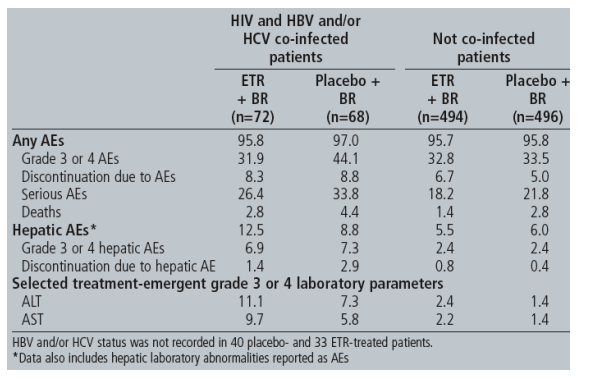
In general, the incidence and severity of AEs with ETR was similar to placebo, irrespective of co-infection status. The incidence of hepatic AEs and grade 3 or 4
AST/ALT elevations was higher in co-infected patients than in not co-infected patients in both treatment groups, consistent with the underlying chronic hepatitis condition. ETR did not increase hepatic toxicity in patients with hepatitis co-infection and was generally well tolerated in all patients.
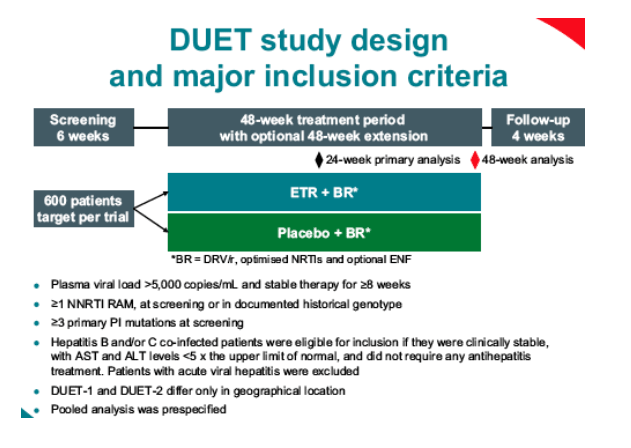
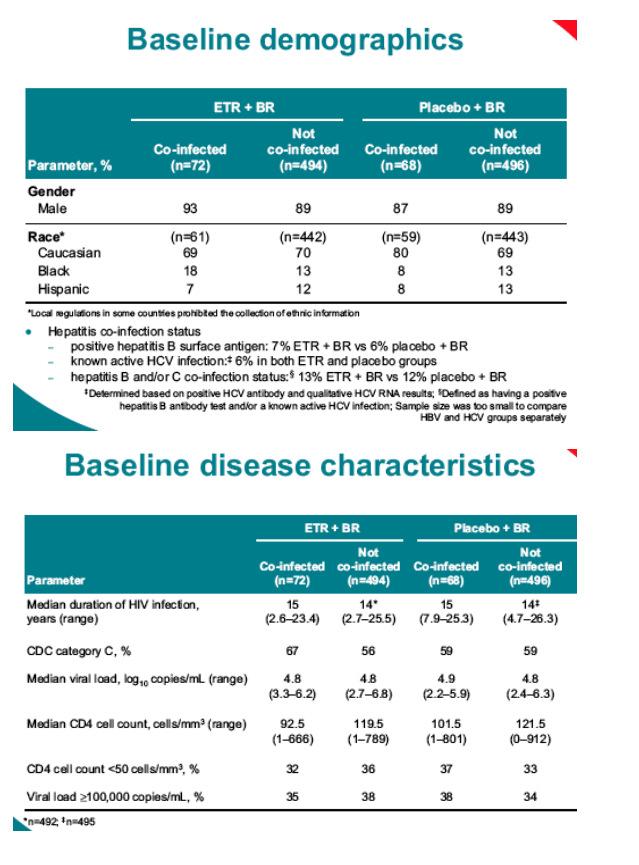
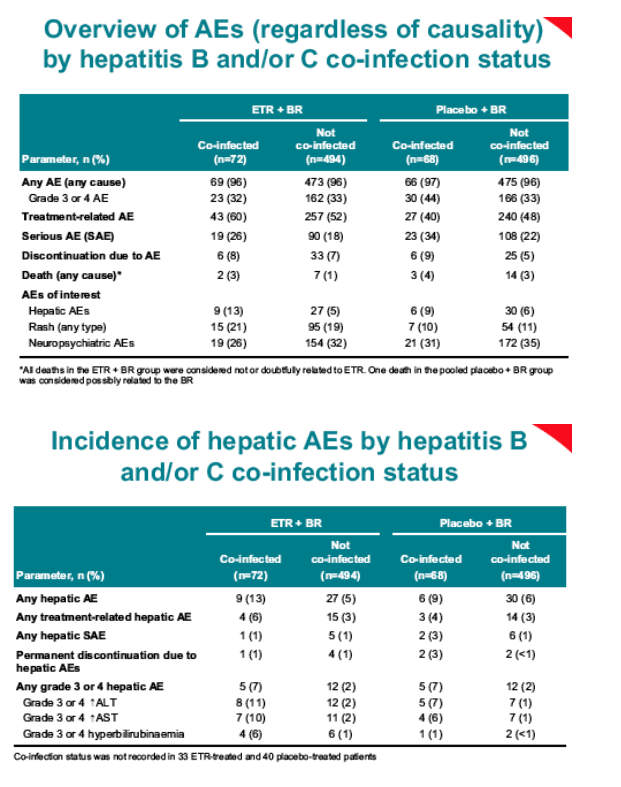

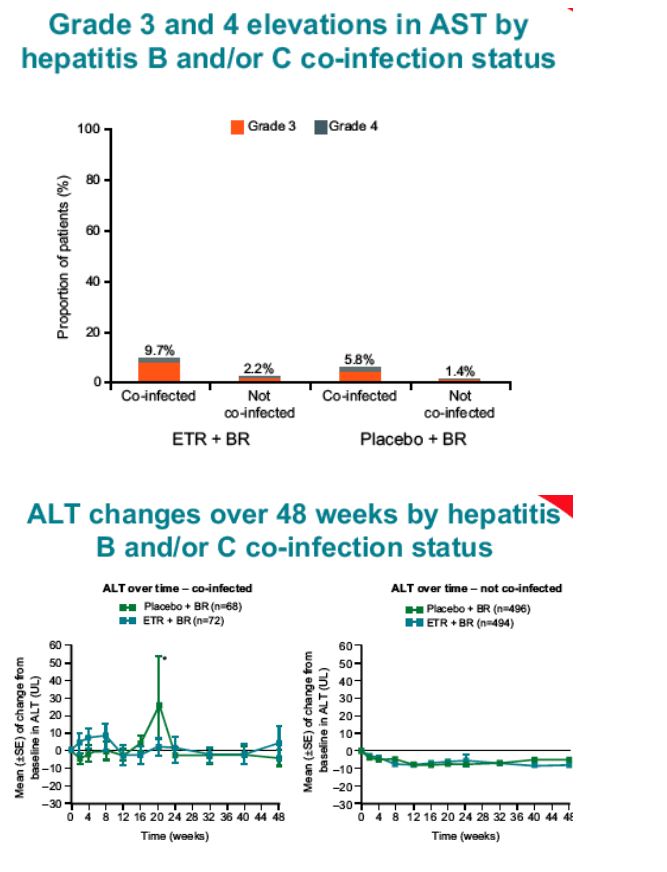
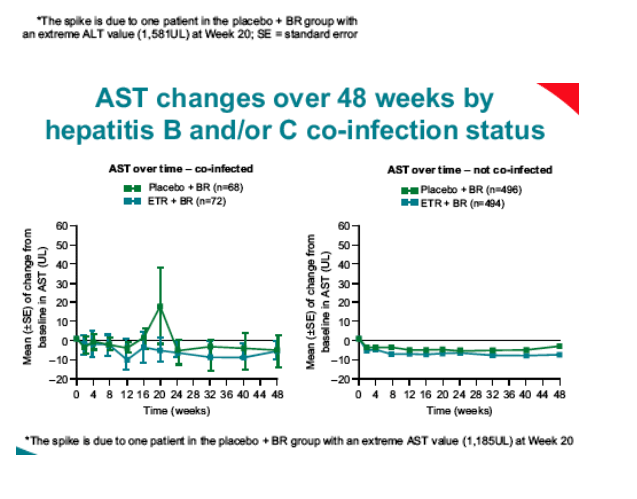
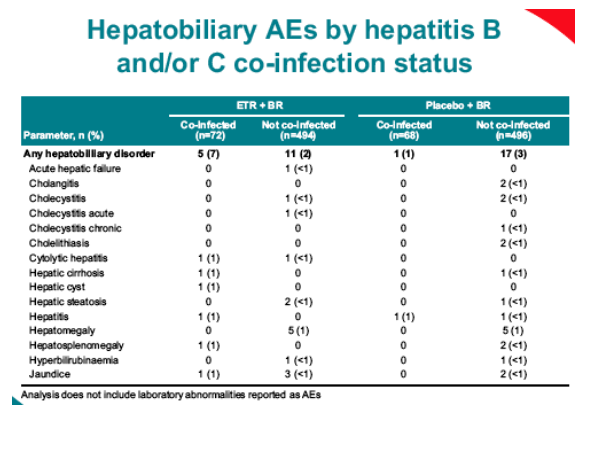
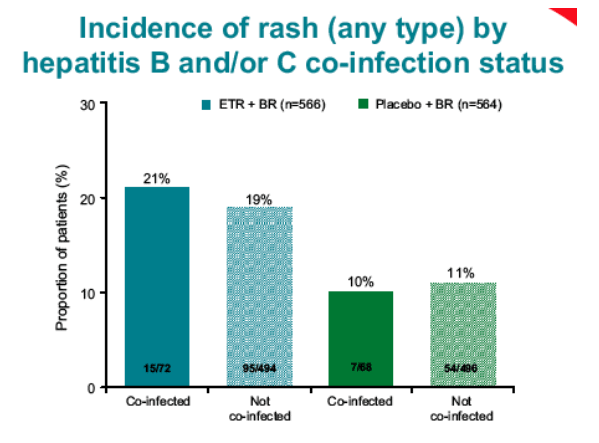
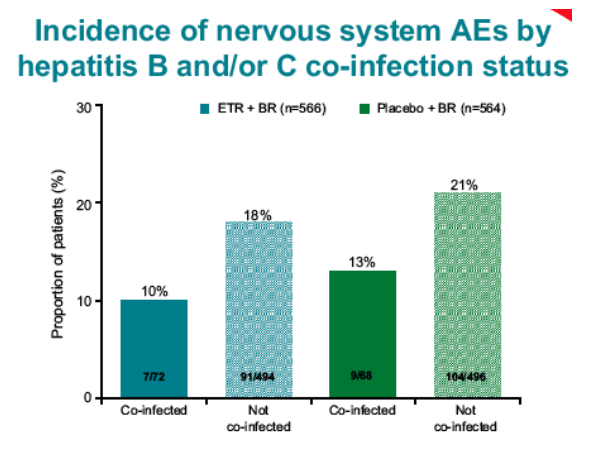
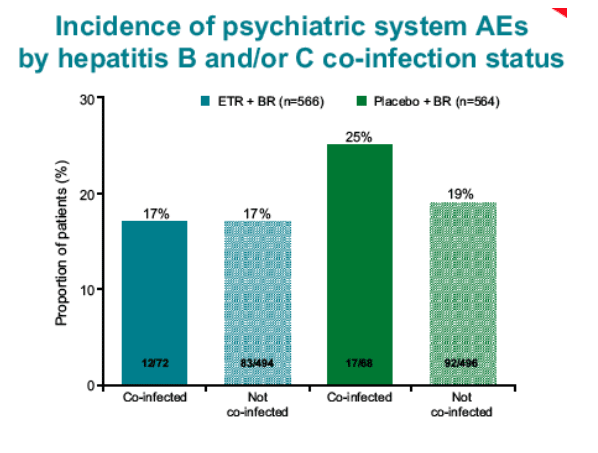
|
| |
|
 |
 |
|
|